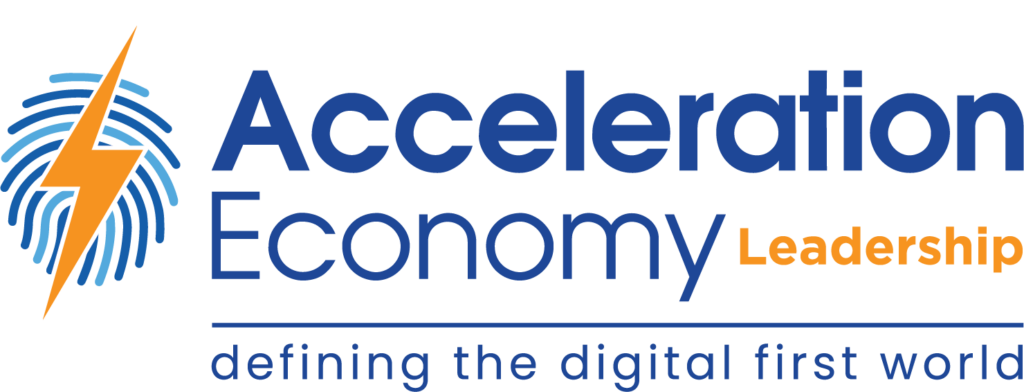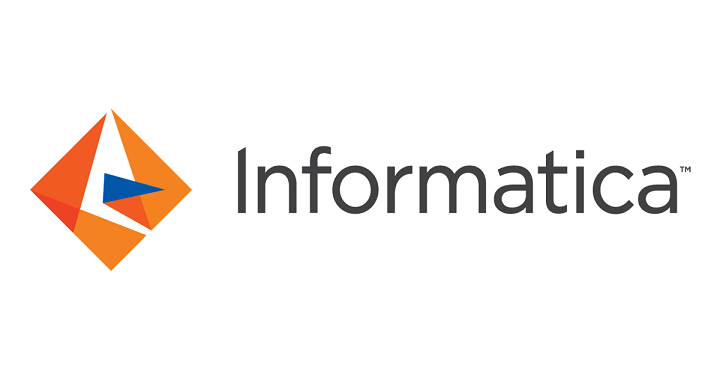The new year is almost here. Yes, we have officially entered the fourth quarter of 2022, meaning 2023 is close! And with a new year comes new plans, new strategies, and a renewed focus on ensuring you are accelerating innovation and achieving your goals. One way to do so is by focusing not only on your data modernization strategy, but also on finding the right tech-savvy partners to help you deploy and manage that strategy. But first things first: As with any technology topic, it’s critical to start with a basic definition, so that we are all talking about the same thing.
So, then — what is data modernization?
Defining Data Modernization
At the most basic level, data modernization is the movement of data from legacy databases to modern databases. Data modernization is crucial for any organization that needs to store unstructured data such as images, mapping, customer audio, social media comments, clinical notes in healthcare, customer meeting notes, and so on. Many firms have moved this data from structured data warehouses to data lakes, like Hadoop, and other open-source solutions that allow for more flexibility, data analysis, manipulation, and storage options than the previous, more rigid warehousing solutions.
Data Modernization and Industry Segments
Data modernization efforts and migration vary widely by industry. The financial sector has been the clear front-runner due to its complex, security-driven data needs and efforts to ensure lower-cost cloud strategies while still allowing for data mining and insights. In contrast, government, mining, and industrial sectors have lagged behind in data modernization. To a certain extent, the delay by these industries is due to their being laggards in strategic intent overall. However, it’s also due to archaic regulations and legacy systems that have them in death holds, making it difficult, if not impossible, to migrate to the cloud.
As in all things, there are exceptions to every rule. Today, we see savvy information technology professionals utilizing even savvier partners to wake up, take notice, and accelerate past their industry segments to achieve great results.
Join us on October 27, 2022 for Acceleration Economy’s Data Modernization Digital Battleground, a digital event in which four leading cloud vendors answer questions on key considerations for updating data strategies and technology. Register for free here.
For example, consider the top performers in the most recent Digital States Survey, presented by the Center for Digital Government (CDG). These top performers shared a common, two-year trend of using cloud technology and data modernization strategies to expand digital services and focus on digital end-user experiences. These states at the top of the chart have also been utilizing the government’s expanding data-collection strategy to find valuable resident and business insights, while still ensuring local information security and privacy against the continual, ever-increasing cyber-attack threats.
Look at how Minnesota transformed its technology prowess by launching a new “Office of Transformation.” This uses a modernization playbook co-created by the state and several technology partners to update not only the kinds of technology state agencies are using, but also how they’re being implemented with stakeholders and citizens. Minnesota did not look at technology first — it looked at what new ways were needed to deliver services. Then it researched, tested, and adopted new cloud technologies that would enable the best experience for state residents.
These progressive states, like Minnesota, are automating things like vehicle registration, health vaccine records, and even emergency food services. The thought in these states about modernization far exceeds that of their counterparts in other, less progressive states. It shows in their resident satisfaction levels and in their ability to manage the costs of technology.
The Role of Partners in Data Transformation
The role of partners in this transformation was also clear. They were tasked with not just understanding what technology would work, but also how it would serve residents’ needs based on their overall experiences as consumers. After all, if you can order a coffee from Starbucks on a mobile app and pick it up within minutes, why can’t you do the same at the local food bank for a family in need of groceries?
But putting residents first required new types of partnerships beyond the cloud ISV (independent software vendor) and infrastructure partners. It required partners who were adept at managing data insights, surveying residents, and looking at workflow and processes versus just a technology solution’s speeds and feeds.
The potential is tremendous now for these states that have modernized their data structure and approach. They are able to be nimbler and compete not just for residents’ wallet share — happier residents lead to more residents wanting to live in your local area — but also for the implementation of innovative new societal solutions.
As an example, I read about a new company in the ecosystem, FoodSmart, which offers a telehealth platform for nutrition, making food plans as easy to track, manage, and comply with as it is with medicine. This is a fascinating concept and one that states that have modernized their data can take advantage of.
Consider the simplest of examples: A state can register and know who is diabetic and food insecure in their community. Working with the FoodSmart platform and its solution partner ecosystem, a state can plan and provide the right food support for those in need. That food will provide the right amount of calories and comply with their diabetic diet, which will keep health care visits down and lead to healthier residents.
These types of solutions will revolutionize the resident experience by improving quality of life and cost-to-serve for communities that implement them.
Getting and Staying Ahead Matters
But what about those states that lag? Well, they will find themselves increasingly competing on an uneven field with other states that provide better technology-driven services. They will not only pay more for technology due to dated legacy structures, but also risk losing the next generation that increasingly values technology interaction and resident services above, say, housing affordability, recreation, and other traditional elements. The fight will be on, and, frankly, those communities and states that modernized their data and used that approach to provide the services that their constituents want will win.
This new standard is true not just in states and governments; it’s true in every industry, too. People want to engage in mobile, digital, secure, data-driven environments that improve their experiences and let them have access to the data and services they need in the minute that matters to them. Those organizations that lag in their industry will pay the price of lower profits, less engaged customers, and a lower chance of long-term survival. Conversely, those companies that accelerate ahead of the pack will attract not only more customers, but also the top talent and the best market opportunities — the data modernization approach they have taken will ensure it.
My recommendation? Gather your best partners together and strategize about how you can accelerate past others in your industry segment and get to work to make it happen — your bottom line and your customers will thank you!
Happy partnering.
Register here for your on-demand pass to view all content from Partners Ecosystem Digital Summit. The digital event, which took place on April 20, focused on analyzing the business and IT imperatives around cloud, AI, automation, data modernization, and cybersecurity that define the future of partnerships.
The Top 20 Data Modernization Providers
In the analysis above, I’ve focused on the why and how of data modernization in relation to partner ecosystems. Below are the best candidates to help you in this endeavor, along with some key strengths that each offers. These companies are the subject of ongoing analysis at the Acceleration Economy site.
| Company | Key data modernization product / service | Why they are in the Top 20 |
| Alibaba | PolarDB | PolarDB is a cloud-native relational database compatible with MySQL, PostgreSQL, and Oracle. PolarDB provides the performance and availability of traditional enterprise databases and the flexibility and cost-effectiveness of open-source databases. |
| Amazon | Amazon Aurora | Amazon Aurora is an affordable and efficient option for running small and medium instances on cloud servers. Aurora offers a choice of additional features designed to make app testing and development easy and efficient. Tens of thousands of customers within many industries rely on Amazon Aurora |
| Cloudera | Cloudera Data Platform | Cloudera quickly became a leader in the big data market after it launched in 2008. They turned Hadoop into an enterprise data hub. |
| Cockroach Labs | CockroachDB | CockroachDB is the world’s most evolved cloud SQL database — providing scale, resilience and low latency. Among their customers: Comcast, Lush, NUBank, Bose or Form3 Financial. |
| Couchbase | Capella Cloud Database | Impressive roster of customer wins with the likes of Home Depot; primary focus on cloud for modernization; company is growing fast in a challenging economy. |
| Databricks | Databricks Lakehouse | More than 5,000 organizations worldwide — including Comcast, Condé Nast, H&M, and over 40% of the Fortune 500 — rely on the Databricks Lakehouse Platform to unify data, analytics and AI. |
| Datastax | Astra DB | Gives enterprises and developers the simplicity and cloud economics to deploy massive data that powers rich interactions through modern apps. DataStax and Apache Cassandra enable over 90 percent of the Fortune 100 to create transformational outcomes with data. |
| Google Big Query | AI-powered easy apps. Easy to use, plus there’s a free tier to explore and choose the ideal services that you need. You can start with cloud computing without worrying about complex user interfaces, dashboards or confusing manuals. | |
| IBM | IBM Cloudant | IBM Cloudant is a distributed database that is optimized for handling heavy workloads that are typical of large, fast-growing web and mobile apps. Available as an SLA-backed, fully managed IBM Cloud service, Cloudant is also available as a downloadable, on-premises installation, and its API and replication protocol are compatible with an open source ecosystem and libraries for the most popular web and mobile development stacks. |
| Informatica | Cloud Data Integration for Cloud ETL and ELT | Combines all your business data into a trusted, unified view with zero-code data integration tools; customers include Grant Thornton, British Telecom and Unilever. |
| MariaDB | MariaDB | Open Source database management system hasstrong focus on security. Cluster database architecture which it brings multi-master replication. Customer include Nokia, Samsung, and Red Hat. |
| Microsoft | Microsoft Azure Synapse | Azure Synapse is an analytics service that brings together enterprise data warehousing and Big Data analytics. It gives you the freedom to query data on your terms, using either server-less or provisioned resources. Azure Synapse delivers a unified experience to ingest, prepare, manage, and serve data for BI and machine learning applications. |
| MongoDB | MongoDB | MongoDB has cultivated a reputation as a versatile, flexible NoSQL database and is currently used as the backend data store of many high-profile businesses and organizations including Forbes, Facebook, Google, IBM, Twitter, and many more. |
| Oracle | Oracle Exadata Database Service | Oracle Exadata is software and hardware engineered to support high-performance Oracle databases. These applications are delivered on an integrated development and deployment platform with additional tools to create and extend new services quickly. Users include Dell Technologies, Duracell and Mazda. |
| RedHat | OpenShift Database Access | Open hybrid cloud is Red Hat’s recommended strategy for architecting, developing, and operating a hybrid mix of applications, delivering a flexible cloud experience with the speed, stability, and scale required for digital business transformation. |
| Redis | Redis Stack | Redis Stack can handle millions of read/write operations per second at sub-millisecond latencies, running on any cloud platform. Seamlessly and automatically scale data across hybrid, cloud regions, and multiple clouds. |
| SAP | SAP BW/4HANA | SAP HANA Cloud offers seamless integration of existing solutions and hybrid systems, rapid deployment, simple development of native business applications, and consistent user experience. |
| Snowflake | Snowflake | Snowflake has out-of-the box features like separation of storage and compute, on-the-fly scalable compute, data sharing, data cloning, and third party tools support. |
| Teradata | Teradata Database | Teradata supports hybrid and multi-cloud capability using the same database across all deployment modes. Customers include Vodafone, Volvo, Groupon and American Airlines |
| VMware | VMWare Private Cloud | VMware Private Cloud is well suited to enterprises considering moving away from on-premises infrastructure to a cloud environment. It lets customers allocate resources on-demand and have complete security controls. VMware is broadly considered the ‘go to’ partner for virtualization. |
Want more tech insights for the top execs? Visit the Leadership channel:








